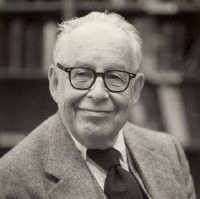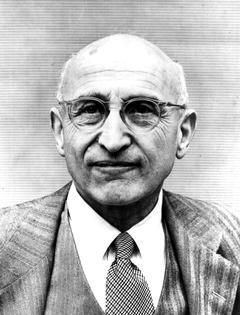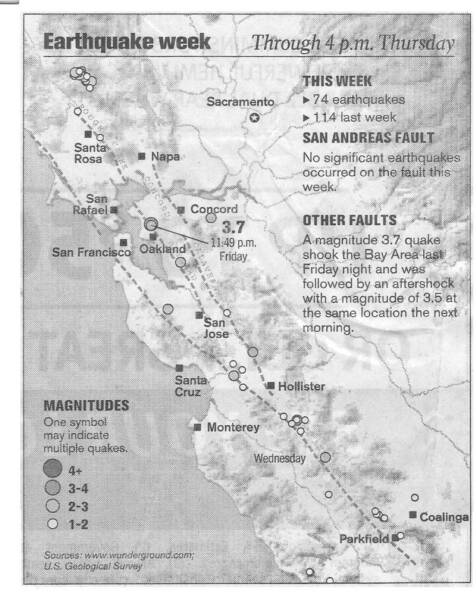 Introduction. Earthquakes are the most sudden, dramatic and destructive of all geological phenomena. The energy released in and the resulting damage produced by a single major earthquake event far exceeds that of even the most powerful explosive device in any nation's military arsenal. An earthquake is simply the Earth's response to the release of energy stored in rocks under stress that have reached their elastic limit or yield stress. The shaking of the earth during an earthquake is merely a result of the passage of this catastrophically released energy outwards from the focus or point of origin of the earthquake. Since energy travels from one location to another through all bodies of matter in the form of waves, an earthquake is simply the natural response of the Earth to the passage of energy through it which, in this case, happens to be from what is called a seismic source. Seismic (or earthquake) waves are part of the broader class of waves called acoustic waves which travel (or propagate) only through bodies of matter. Unlike electromagnetic waves (such as light, radio waves, and x-rays), acoustic waves require matter in order to propagate. In fact, the denser and the more rigid a body of matter, the faster and more efficiently an acoustic wave will travel through it. Just like the entire body of a bell or a gong uniformly vibrates (or resonates) with a characteristic tone when they struck, the entire body of the Earth resonates in response to each and every release of energy within it. The waves generated in this energy release travel through the entire body of the Earth as well as along its surface. Some energy is even transferred into the atmosphere whereupon an audible sound is frequently created. There are several different types of seismic waves, each characterized by a particular style of motion. The sources of stress which are fundamentally responsible for an earthquake are principally tectonic, gravitational, or volcanic origin. Earthquakes are classified on the basis of magnitude and intensity. The magnitude of an earthquake refers to the amount of energy that is released whereas the intensity of an earthquake refers to the amount of deformation (or ground shaking) experienced at a particular location. Earthquakes are always associated with faulting and as such usually occur with greatest frequency in arcuate belts which are coincident with major active fault zones. It is important to keep in mind that every region on Earth experiences earthquakes, even those not located near active fault zones, and that there is always a certain measure of earthquake risk regardless of location. Since earthquakes are always associated with faults, they are generally confined to the outermost (brittle) layer of the Earth known as the lithosphere. As such, the vast majority of earthquakes are confined to the uppermost 100 kilometers of the Earth's surface, beneath oceans as well as continents. The deepest recorded earthquake occurred in the western Pacific at a depth of approximately 700 kilometers in association with a subduction zone. The branch of geology that is concerned with the study of earthquakes and related phenomena is known as seismology.
Introduction. Earthquakes are the most sudden, dramatic and destructive of all geological phenomena. The energy released in and the resulting damage produced by a single major earthquake event far exceeds that of even the most powerful explosive device in any nation's military arsenal. An earthquake is simply the Earth's response to the release of energy stored in rocks under stress that have reached their elastic limit or yield stress. The shaking of the earth during an earthquake is merely a result of the passage of this catastrophically released energy outwards from the focus or point of origin of the earthquake. Since energy travels from one location to another through all bodies of matter in the form of waves, an earthquake is simply the natural response of the Earth to the passage of energy through it which, in this case, happens to be from what is called a seismic source. Seismic (or earthquake) waves are part of the broader class of waves called acoustic waves which travel (or propagate) only through bodies of matter. Unlike electromagnetic waves (such as light, radio waves, and x-rays), acoustic waves require matter in order to propagate. In fact, the denser and the more rigid a body of matter, the faster and more efficiently an acoustic wave will travel through it. Just like the entire body of a bell or a gong uniformly vibrates (or resonates) with a characteristic tone when they struck, the entire body of the Earth resonates in response to each and every release of energy within it. The waves generated in this energy release travel through the entire body of the Earth as well as along its surface. Some energy is even transferred into the atmosphere whereupon an audible sound is frequently created. There are several different types of seismic waves, each characterized by a particular style of motion. The sources of stress which are fundamentally responsible for an earthquake are principally tectonic, gravitational, or volcanic origin. Earthquakes are classified on the basis of magnitude and intensity. The magnitude of an earthquake refers to the amount of energy that is released whereas the intensity of an earthquake refers to the amount of deformation (or ground shaking) experienced at a particular location. Earthquakes are always associated with faulting and as such usually occur with greatest frequency in arcuate belts which are coincident with major active fault zones. It is important to keep in mind that every region on Earth experiences earthquakes, even those not located near active fault zones, and that there is always a certain measure of earthquake risk regardless of location. Since earthquakes are always associated with faults, they are generally confined to the outermost (brittle) layer of the Earth known as the lithosphere. As such, the vast majority of earthquakes are confined to the uppermost 100 kilometers of the Earth's surface, beneath oceans as well as continents. The deepest recorded earthquake occurred in the western Pacific at a depth of approximately 700 kilometers in association with a subduction zone. The branch of geology that is concerned with the study of earthquakes and related phenomena is known as seismology.
 Earthquake (Seismic) Waves.
Earthquake (Seismic) Waves.
 Primary Waves. Primary (or P) waves, also known as compressional waves, are the most efficient and fastest seismic wave type. Here, the particles of rock matter vibrate in a back and forth motion, like the coils of a helical spring, parallel to the direction of energy transport. Primary waves can travel through solids, liquids, and gases and are generally fastest through materials which possess the greatest density.
Primary Waves. Primary (or P) waves, also known as compressional waves, are the most efficient and fastest seismic wave type. Here, the particles of rock matter vibrate in a back and forth motion, like the coils of a helical spring, parallel to the direction of energy transport. Primary waves can travel through solids, liquids, and gases and are generally fastest through materials which possess the greatest density.
 Secondary Waves. Secondary (or S) waves, also known as shear waves, are slightly slower than primary waves. Here, the particles of rock matter vibrate in a sideways motion, like the slithering motion of a snake, perpendicular to the direction of transport. Secondary waves are restricted to travel through solids only, since only bodies with a measure of internal rigidity can support such sideways (or shearing) motion.
Secondary Waves. Secondary (or S) waves, also known as shear waves, are slightly slower than primary waves. Here, the particles of rock matter vibrate in a sideways motion, like the slithering motion of a snake, perpendicular to the direction of transport. Secondary waves are restricted to travel through solids only, since only bodies with a measure of internal rigidity can support such sideways (or shearing) motion.
 Long Waves. Long (or L) waves are the slowest of the seismic wave family, although they are the most destructive. Long waves travel along the Earth's surface, at the boundary between the solid Earth and the atmosphere. There are several types of Long waves (such as Love and Rayleigh waves), each characterized by a particular (and usually complex) motion. Long waves are the principal carriers of the destructive energy released in an earthquake.
Long Waves. Long (or L) waves are the slowest of the seismic wave family, although they are the most destructive. Long waves travel along the Earth's surface, at the boundary between the solid Earth and the atmosphere. There are several types of Long waves (such as Love and Rayleigh waves), each characterized by a particular (and usually complex) motion. Long waves are the principal carriers of the destructive energy released in an earthquake.
 Earthquake Magnitude. The magnitude of an earthquake is a measure of the amount of energy it released. A quantitative scale of earthquake magnitude was developed by Charles L. Richter of the California Institute of Technology based on the written records of a standard Wood Anderson seismograph, a device designed to detect and record the passage of seismic energy. According to Richter, the magnitude of energy released in a seismic event can be directly determined from a direct interpretation of a seismogram, the written record of the passage of seismic waves at a seismograph station. The magnitude of a seismic event depended upon two principal features: the amplitude of the most extreme recorded waves (measured in millimeters) and a distance correction factor based upon the difference in S and P wave arrival times (measured in seconds). The Richter magnitude algorithm appears as follows:
Earthquake Magnitude. The magnitude of an earthquake is a measure of the amount of energy it released. A quantitative scale of earthquake magnitude was developed by Charles L. Richter of the California Institute of Technology based on the written records of a standard Wood Anderson seismograph, a device designed to detect and record the passage of seismic energy. According to Richter, the magnitude of energy released in a seismic event can be directly determined from a direct interpretation of a seismogram, the written record of the passage of seismic waves at a seismograph station. The magnitude of a seismic event depended upon two principal features: the amplitude of the most extreme recorded waves (measured in millimeters) and a distance correction factor based upon the difference in S and P wave arrival times (measured in seconds). The Richter magnitude algorithm appears as follows:
M = log10A + 3log10[8(S - P )] - 2.92
where M is magnitude, A is recorded wave amplitude (in millimeters), S -P is the difference between S and P wave arrival times (in seconds). The Richter magnitude scale ranges from 0 to 10 with greater values indicating greater amounts of seismic energy release. It should be pointed out that the magnitude scale is not a simple arithmetic one. The difference in energy released between sequential magnitude events varies by a factor of 30, such that a M = 3 earthquake releases 30 times more energy than and M = 2 earthquake and 900 times more energy than a M = 1 earthquake.
 Earthquake Intensity. The intensity of an earthquake is an expression of the Earth's response to the passage of seismic energy which in turn depends upon many local geological factors in addition to magnitude. An earthquake intensity scale, developed by Mercalli, is based upon direct observation of the magnitude of damage and deformation suffered by natural and man-made structures. Unlike the Richter magnitude scale, the Mercalli scale is essentially a qualitative one, in which the severity of damage and deformation produced by a particular event is assigned a Roman numeral ranging from I through XII in order of increasing severity.
Earthquake Intensity. The intensity of an earthquake is an expression of the Earth's response to the passage of seismic energy which in turn depends upon many local geological factors in addition to magnitude. An earthquake intensity scale, developed by Mercalli, is based upon direct observation of the magnitude of damage and deformation suffered by natural and man-made structures. Unlike the Richter magnitude scale, the Mercalli scale is essentially a qualitative one, in which the severity of damage and deformation produced by a particular event is assigned a Roman numeral ranging from I through XII in order of increasing severity.
Obviously, an event of X through XII would reflect damage of catastrophic proportions. An isoseismal map, produced by contouring regions which experienced the same intensity in a particular event, are useful to seismologists as well as urban planners in assessing and assigning seismic risk.
 Earthquakes and Building Safety. Generally speaking, buildings constructed in areas which are underlain by unconsolidated sediments suffer the most damage in an earthquake due to the fact that there is little internal rigidity to keep the soil particles together when seismic waves are traveling through them. If the soils are water saturated, the degree of damage is even greater due to the phenomenon known as liquefaction whereby the soils lose all internal strength and unprepared buildings either topple over or sink as if they were suddenly standing on water. Bedrock on the other hand is the ideal surface upon which to construct a building in an earthquake-prone area, due to the fact that rock possesses a large internal rigidity and responds as a coherent unit during the passage of seismic waves.
Earthquakes and Building Safety. Generally speaking, buildings constructed in areas which are underlain by unconsolidated sediments suffer the most damage in an earthquake due to the fact that there is little internal rigidity to keep the soil particles together when seismic waves are traveling through them. If the soils are water saturated, the degree of damage is even greater due to the phenomenon known as liquefaction whereby the soils lose all internal strength and unprepared buildings either topple over or sink as if they were suddenly standing on water. Bedrock on the other hand is the ideal surface upon which to construct a building in an earthquake-prone area, due to the fact that rock possesses a large internal rigidity and responds as a coherent unit during the passage of seismic waves.
Questions.
1. Briefly define an earthquake and list some of its possible causes.
2. Briefly explain the geographic distribution of earthquakes and the features with which they are associated.
3. Briefly explain the vertical distribution of earthquakes with respect to the Earth's surface. Which zone is defined on the basis of its ability to sustain earthquakes and what is its depth?
4. Briefly list and describe the three basic types of seismic waves. Which type is responsible for producing the most damage at Earth's surface?
5. Briefly define earthquake magnitude and how it is quantified. Which two features of a seismogram yield direct information about an earthquake's magnitude?
6. How many times more energy is released in an M = 7 seismic event than in an M = 3 seismic event?
7. How does an earthquake's intensity differ from its magnitude?
8. Which type of surface material is least desirable for building construction in a seismically prone region? Explain.
9. Which type of surface material is most desirable for building construction in a seismically prone region? Explain.
Giuseppe Mercalli is credited with having developed the first earthquake intensity scale. C. F. Richter is credited with having developed the first earthquake magnitude scale and the algorithm for its calculation based on the interpretation of seismograms. Beno Gutenberg is credited with elucidating the internal structure of the Earth, particularly the partially liquid nature of the outer core, from observations of seismic wave travel through Earth's interior.
From the San Francisco Chronicle, Friday, December 29, 2006



